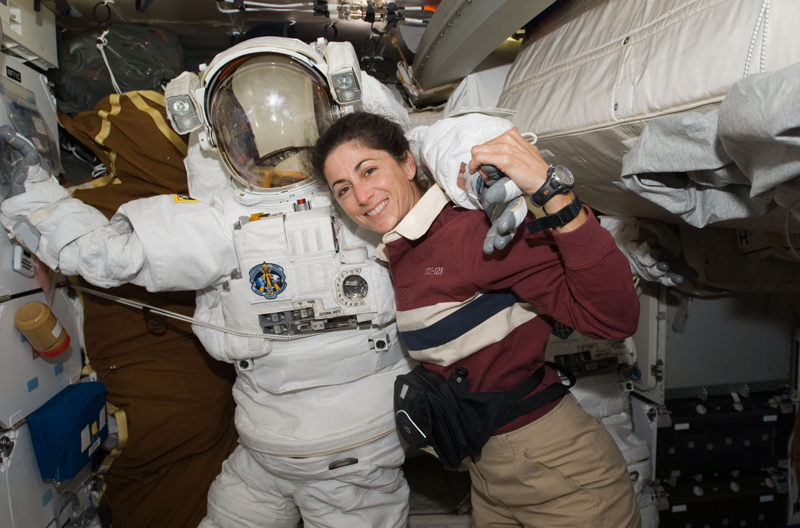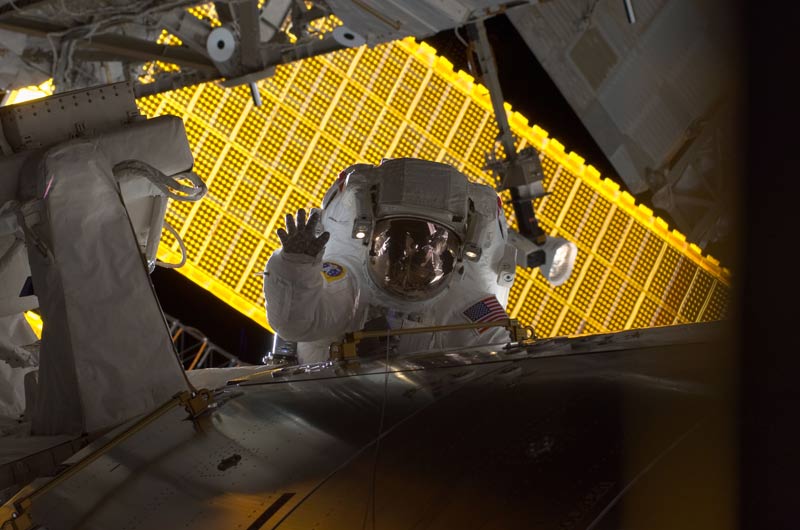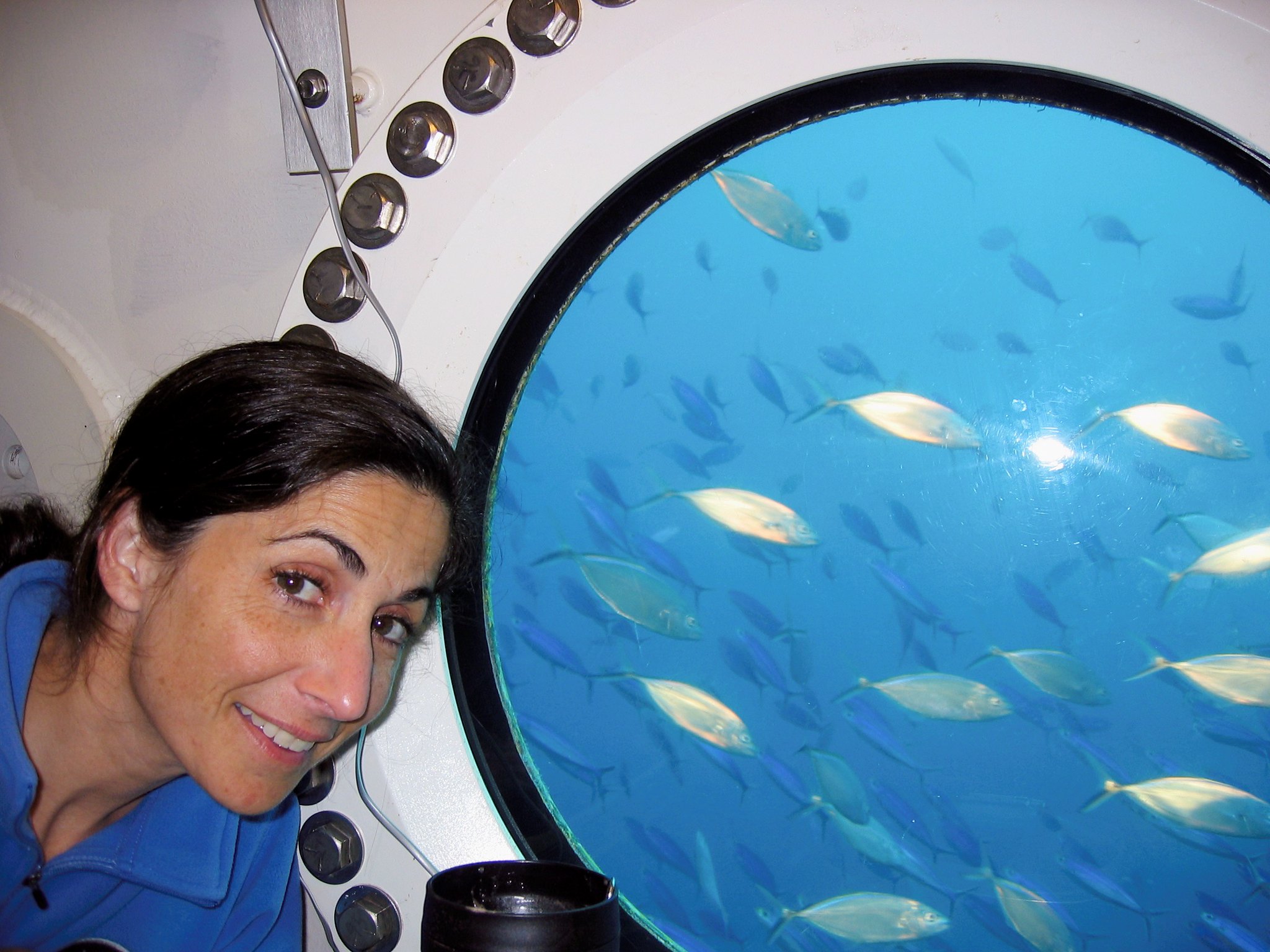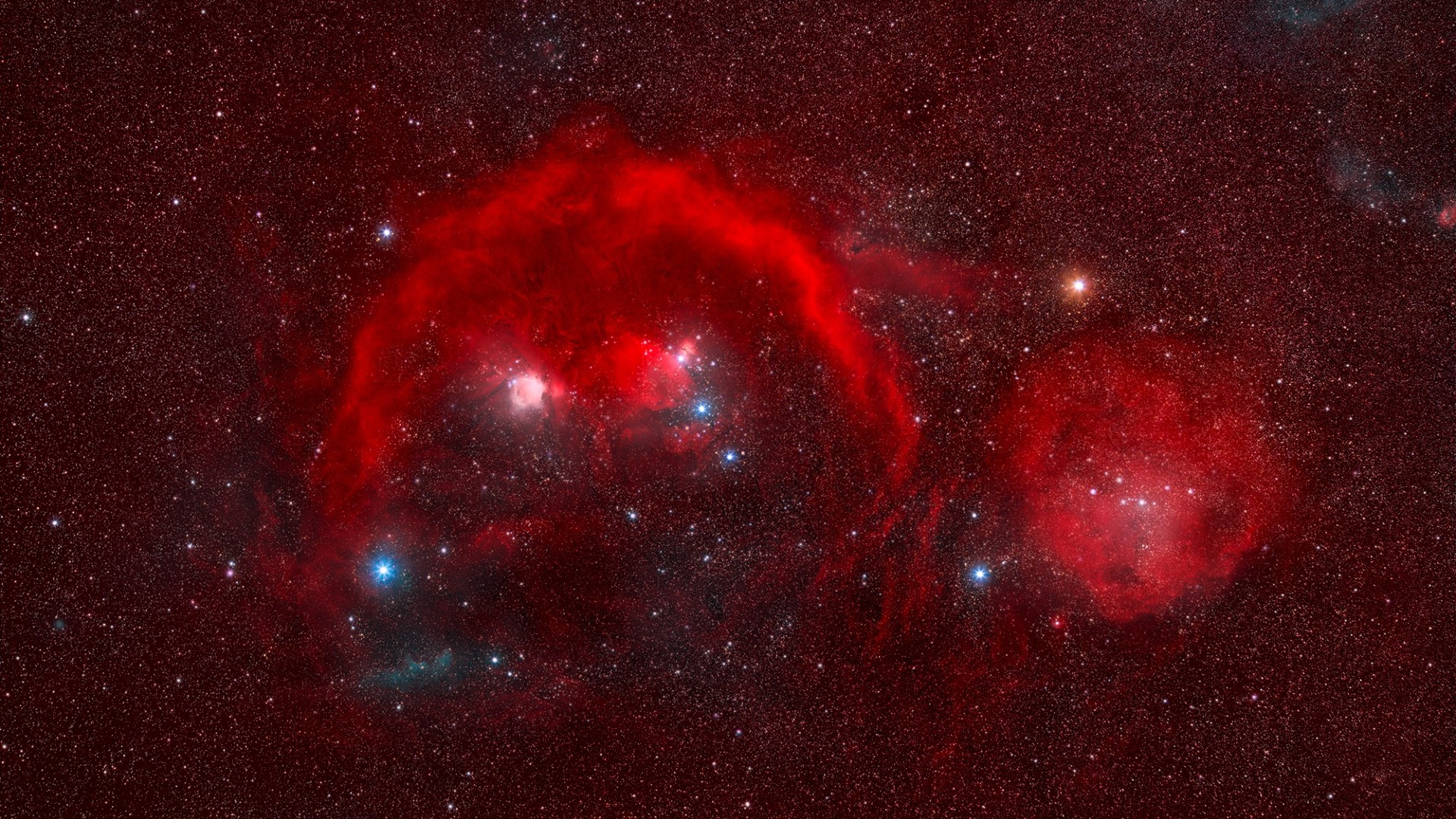The International Space Station and spaceship Earth share the same priorities, astronaut Nicole Stott says
Tune in to "The Virtual Astronaut" panel with retired NASA astronaut Nicole Stott and others on Oct. 30!

Retired NASA astronaut Nicole Stott will share the similarities between space station engineering and Earth's natural systems in an online panel discussion Friday (Oct. 30).
Stott and several other space station astronauts will participate in the discussion as part of The Virtual Astronaut series, which highlights the contributions of astronauts to space exploration. The discussion on the 20th anniversary of permanent occupation of the International Space Station (ISS) will be moderated by collectSPACE founder and Space.com contributor Robert Pearlman. You can buy tickets here.
Stott flew twice in space, during the three-month Expedition 20/21 in 2009 and the 12-day space shuttle mission STS-133 in 2011. As an engineer, Stott found it fascinating to see how space exploration "takes gravity out of the equation" for manufacturing and basic research in space, she told Space.com. (One commonly cited application of space research is the effect on human health, which simulates in part the aging process on Earth as bones weaken and muscles lose strength.)
Related: Astronaut-artist Nicole Stott shares view from space in paintings

Space also served as a microcosm for how teams should behave on Earth, Stott said. As an ISS resident, Stott said she had a great appreciation for the mechanical systems keeping the crew safe, from the system that converts urine into drinkable water, to the constant monitoring of how much carbon dioxide is in the space station's atmosphere.
The mechanical systems are made possible by a range of space station partners, she pointed out, just like it takes international collaboration to keep Earth's natural systems functioning against the threats of global warming and pollution. "It [the ISS] is absolutely the best model of how we should be living and working together on spaceship Earth," she said.
Stott is working on a new book, "Back to Earth," which is scheduled to be published by Seal Press (an imprint of Hachette Book Group) in fall 2021. The book is not a memoir, she said, but more a description of the space program's approach to problems — a "how we can" as opposed to a "how we can't" approach, she said. But there will be some anecdotes of Stott's spaceflights in the book, she added.
Breaking space news, the latest updates on rocket launches, skywatching events and more!
For example, one common challenge United States residents and space station residents alike must face is working with a diversity of opinions and backgrounds, she said. Stott's approach is to acknowledge that different views are healthy, but that there is only one border that should matter to humanity: the thin line separating the Earth's breathable atmosphere from the harsh, radiation-filled space environment.
"That is what has been with me since I flew in space, and it's guiding my choices for what I do and don't do, what I support and don't support," Stott said. "I want people to understand that without feeling like you have to go to space to get that. You don't have to go to space to know we have a planet. Everything is interconnected."
For about a decade before joining NASA as an astronaut in 2000, Stott worked for the agency's Kennedy Space Center (KSC) in Florida as an operations engineer in the orbiter processing facility, where space shuttles were readied for spaceflight. She joined this team in 1988, when the agency was focused on bringing the shuttle fleet safely back to space after the redesign forced by the fatal Challenger explosion of 1986. She especially praised the mentorship of Jay F. Honeycutt, who helped her and many other young engineers before eventually rising to be the director of KSC in 1995.
"When I think about the overall experience [of spaceflight], I think about the people there," Stott recalled. That's where I first got this sense of 'Here's why we can' succeed, not why we can't … There's this sense of accountability of the team, really feeling like the care and feeding of their spacecraft is their responsibility. You want to work with that."
Between 1998 and 2000, Stott served as a flight simulation engineer on the Shuttle Training Aircraft, which duplicated the steep final approach for shuttle landings and also served as a mobile weather station before launches. Training, she added, was what she continued to do even after being selected as an astronaut — if not for her own missions, then as a supporter for others in Mission Control, or developing procedures, or developing hardware.
"I had a lot of experience in my [astronaut] ground job working with the payload developers, the people putting together all the science and the training for the space station," she said. "I always enjoyed it, but I didn't realize what insight that would give me to working with the science and the people when I was on station. Knowing who was in the control center in Huntsville, Alabama and having that relationship already was really special."
Stott's spaceflight milestones include participating in the first track and capture of the Japanese HTV cargo vehicle during Expedition 20/21, and delivering a bus-size closet known as the Permanent Multipurpose Module to the space station during STS-133. She performed a spacewalk during STS-128 (the shuttle mission that brought her to the ISS for her long-duration stay) and flew the Canadarm robotic arm during STS-133. On the ground, she also served for NEEMO 9, a 2006 underwater NASA mission that tested space medicine concepts and moonwalking techniques.

Stott will deliver her talk in support of the Space for Art Foundation, which she co-founded after retiring from NASA in 2005. The foundation has served children in 50 countries who live in tough situations, such as in refugee camps or in hospitals, and hopes to expand to every country in the world.
"We're uniting a planetary community through the awe and wonder and inspiration of spaceflight, along with the healing power of art," Stott said. "Just like the space station, it [the foundation] allows us to bring together an international population in a great way."
Follow Elizabeth Howell on Twitter @howellspace. Follow us on Twitter @Spacedotcom and on Facebook.
Join our Space Forums to keep talking space on the latest missions, night sky and more! And if you have a news tip, correction or comment, let us know at: community@space.com.

Elizabeth Howell (she/her), Ph.D., was a staff writer in the spaceflight channel between 2022 and 2024 specializing in Canadian space news. She was contributing writer for Space.com for 10 years from 2012 to 2024. Elizabeth's reporting includes multiple exclusives with the White House, leading world coverage about a lost-and-found space tomato on the International Space Station, witnessing five human spaceflight launches on two continents, flying parabolic, working inside a spacesuit, and participating in a simulated Mars mission. Her latest book, "Why Am I Taller?" (ECW Press, 2022) is co-written with astronaut Dave Williams.
